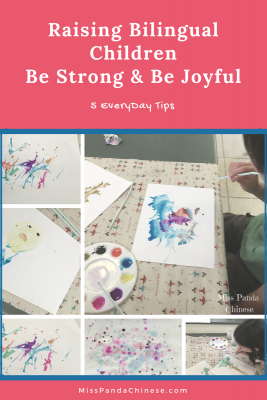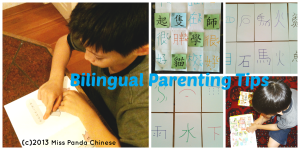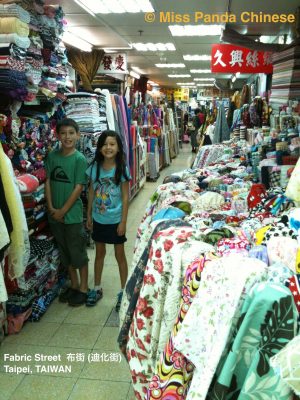
This post has affiliate links, thank you for your support.
Raising Bilingual Children: Be Strong and Be Joyful.
We’ve all heard the adage “hindsight is 20/20.”
Looking back on the early days of when we first set out on our family language-learning journey reveals to me how important it is to change things up and to remain flexible with how we approach the process. It’s sometimes easy to forget during rough patches, but I have learned that having fun with the kids as they learn is more important than concrete measurements like how many phonetic symbols they know or exactly how many lessons we have gone through for the week.
Below I lay out five everyday tips on raising a bilingual child for you to start or perhaps improve your personal language acquisition journey with your own children.
1. Start Early
Research has shown that young children’s brains are hard-wired for language acquisition. If you know a language other than English (or the particular community language you are surrounded by) start speaking that language with your child right away.
Raising a bilingual child needs everyday target language input. I spoke both Mandarin Chinese and English to my son when he was a baby. Since my husband was also speaking English to him that meant that he didn’t hear as much Chinese as he could have. I changed things up when my daughter came along and spoke to her almost exclusively in Chinese. There was a clear difference in their resulting fluency and it took some time for me to bring my son up to my daughter’s level as a result.
Don’t worry that your children’s English ability will be negatively affected. It won’t. This is supported by research. They can handle even more. Both my son and daughter were exposed to a third language before they could even walk.
My son was exposed to Russian, so at the time we had English, Chinese, and Russian at home, and he was able to respond to questions in Russian and identify objects. Several years later when our daughter came along she was exposed to daily French at her daycare. She wasn’t even speaking English when she joined the part-time English/French bilingual playschool but two months after she started the program she got up one morning and said “Bonjour!” to me! Young children have such amazing learning abilities. Test your child’s out and see.

Raising a Bilingual Child in English and Chinese
2. Learn On The Go
Prepare a good selection of audio programs for the car (or commute) and rotate them. When we talk about target language input for raising bilingual children we can take advantage of different opportunity to make it a routine with fun and entertaining audio program. Our captive audience in the car will enjoy it. It might be different at the beginning but if you as a parent are showing the enthusiasm, following along, repeating, singing, wiggling… your child will sense that and join in the “new” fun.
I have two CD cases in our car – one for Chinese and the other for English and other languages. We frequently listen to Chinese songs, stories, and tongue twisters on the way to school or home. When the kids were toddlers it was a great way to entertain them. They were a “captive audience” in the car anyway and it gave them something constructive to focus on. They listened to the songs and stories and wiggled and giggled in their seats. A video is not needed. Listening in the car is a fun way to learn and it is good for their imagination since there are no visual images.
3. Create Group Learning Opportunities
Take learning beyond the home. It is wonderful if you have a playgroup in your target language or if your child can attend an immersion school. When you raising a bilingual child you want to have a community to support you on this bilingual family adventure online or offline.
Since I was not able to locate any in my area I decided to bring Mandarin Chinese language and Chinese culture to my children’s classrooms myself. I first started doing a Chinese New Year culture presentation when my son was in preschool. Then I brought a Mandarin Chinese language program to my daughter’s preschool and later to both of their elementary school classes. I currently go to school once a week and teach my daughter’s entire grade level Mandarin Chinese.
I was very lucky to have the support of the schools and teachers to bring my program to them. It inspires my kids when other children are so excited about learning Mandarin Chinese and Chinese culture. It also doesn’t hurt that my son thinks it’s cool that his mother is “famous” because of her Chinese classes (it makes him proud and inspires him to learn more).

4. Keep It Real
Give your children real-world opportunities to use their language skills. Set up a time to talk to grandparents and relatives who speak the target language either face-to-face or via the phone, Skype, Facetime, WeChat, Line, Google hangouts or other creative ways.
Participate in cultural events in the target culture and language when they are available. Visit an ethnic supermarket, grocery store, shop, or restaurant to experience the culture and use the language firsthand. Visiting a language school or program to meet children who are also learning the same language can also inspire your children.
Try to read in your target language to your child every day or use online resources like Miss Panda’s Reading Playground – when children can later read in the target language on their own they will feel a closer connection with the language. Reading stories in the target language is always the best choices to provide target language input when you raising a bilingual child.
5. Be Like Water… 滴水穿石 dī shuǐ chuān shí
We’ve all seen what flowing water does when it runs into an obstacle. It always tends finds a way around it. If your children’s language learning seems to have hit a standstill or they begin to rebel because it is not fun don’t feel restricted to one technique or another. Change things up when language learning seems to get stale or your child isn’t having fun.
When my children were little and spent most of their time with me the One Parent-One Language approach worked fine. Then we started to go to playgroups, play dates and school and the community language (English) played an increasingly important role in their lives. It was associated with fun time and friends. On the other hand, Chinese was in danger of being associated with homework and chores – something you didn’t want to do but had to do. One thing I have learned is to be flexible with our target language approach.
We need to individualize our strategy with our children and our family and our circumstances. When we are on a plateau or on a hill let’s go to the park, take a walk, or jump in the pool to recharge. Find a way to associate the language learning with fun. Watch a movie or play a game in the target language. Don’t forget to pause and enjoy the scenery on this bilingual parenting journey and appreciate what our children and we have accomplished at this time. We need to remember this is a trip of discovery for the kids and for us. Raising a bilingual child is a marathon, not a sprint.
Our bilingual family journey 2016 update: An Interview with My Son (Interview is done in Mandarin Chinese with English subtitle).
Children are like sponges (learning ability) only when they are provided with water (active target language resources) day after day.
Love to read more Chinese teaching resources from Miss Panda? Sign Up for Email Updates:
You Might be Interested in More in the Bilingual Parenting Series
Adam Beck from Bilingual Monkeys shares his bilingual family story and his new book, Maximize Your Child’s Bilingual Ability with us on this fun and interactive interview.
Ming Jung Chen, World Language Chinese instructor at Menlo School and her adult daughter share their bilingual family story with us in this mother-daughter conversation.
Rita Rosenback from Multilingual Parenting shares her book, Bringing Up A Bilingual Child and her successful bilingual parenting journey with her two adult daughters.
Bilingual Family Spotlight: Raising Bilingual Children in Chinese and English
An Interview with My Son on Learning His Heritage Langauge-Chinese.
Watch Bilingual Family Stories on Miss Panda Chinese YouTube Channel
I love your post, and I especially love that your son is proud to have a celebrity Mom! I enjoyed your last tip, “be like water”, and that’s exactly what I’ll be doing! 🙂 Great post!
Thank you very much, Frances. Being flexible is important since every child is unique.
As my daughter heads off to kindergarten, you’ve really got me thinking with point #3 above. I might just have to start a program… thanks for the inspiration!
Julie
OpenWideTheWorld
You are welcome. Thank you for visiting. Having a program of your own at your child’s class or school will be something very special for your little one. Learning is so much fun when their friends are also a part of it.
I love the practicality of these suggestions! Great ideas!
Thank you so much! I am glad that you enjoyed the post.
Great tips. I’ve recently started showing Chinese videos in the car on longer car rides. The kids are more than happy to watch. Also, our recent trip to Taiwan gave them a chance to meet their 2nd cousins, which got them more interested in learning Chinese, and now they’re going to try to send emails back and forth in a combination of Mandarin & English. So fun!
Love it, Asianmommy! Your trip to Taiwan made an important connection between the language and the fun cousins. That is priceless. My kids are excited about our trip to Taiwan because they are looking forward to seeing their friends, having the snacks that they don’t usually get here in the States, and visiting the markets… This relationship makes the language learning exciting and it is their own experience. I am so happy to hear your story.
Great tips! We are monolingual parents raising a trilingual/triliterate in Mandarin/Spanish/English and have used many of these ideas.
I didn’t realize what an ambitious goal this was until during our process, I met so many native speakers who failed to raise their children as bilinguals…despite intending to do that.
It has been worth the effort…she just won the Mandarin elocution trophy at her Chinese school in Asia…first Caucasian to do that in 63 years!
http://www.soultravelers3.com/2013/03/mandarin-ted-talk-american-kids-inspiring-chinese-speech-.html
It was also thrilling that on her first visit to mainland China she could talk to everyone which made a huge difference to all of us.
Jeanne, Thank you! I have been following your family adventures. It is exciting to see how you create the environment for your daughter to learn languages and cultures. I enjoyed the videos of your daughter speaking Mandarin Chinese and Spanish. Learning is a part of everyday life and your classroom for your little one is the world. Love it!
Lovely post. 3,4,& 5 – my favorites. Forwarding your blog to my friend who is raising bilingual twin girls in Mandarin.
Thank you for your kind comment and sharing this post with your friend. It is important that we find a support group for our journey on raising bilingual/multilingual kids. Reading and listening to other parents’ stories give us the insights and more creative ideas.
These are excellent tips! I haven’t been very dedicated in teaching my children to be bilingual, but they still surprise me by showing how much French they know – like today, when my 5yo declared, “J’ai faim” (I’m hungry).
Thank you so much for these great tips! I completely agree in that teaching another language needs to be fun.
It is so important to keep it going and fun is an important factor!